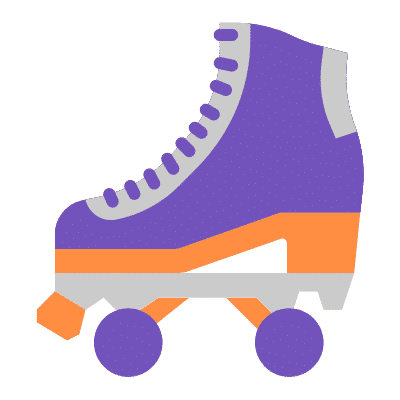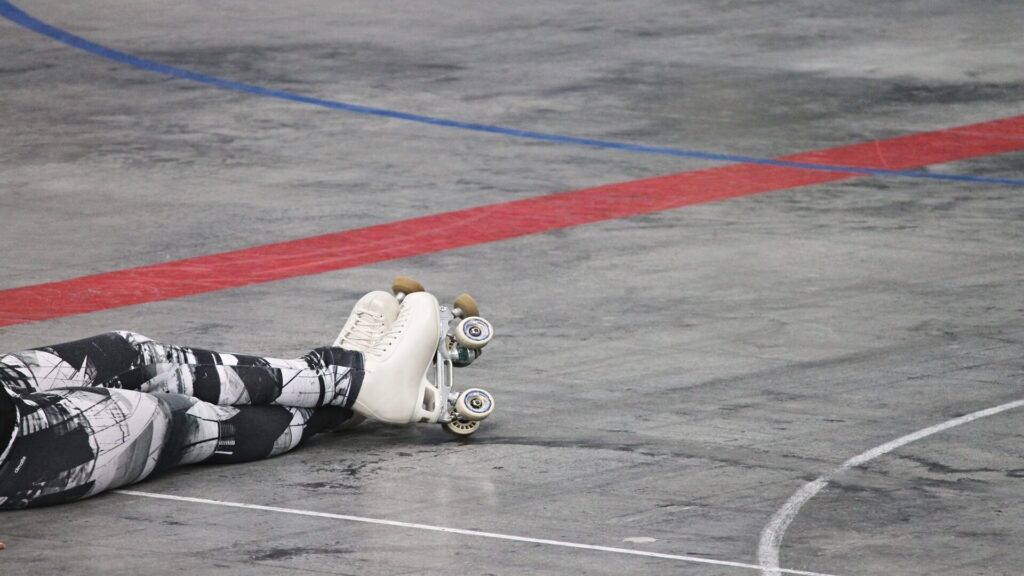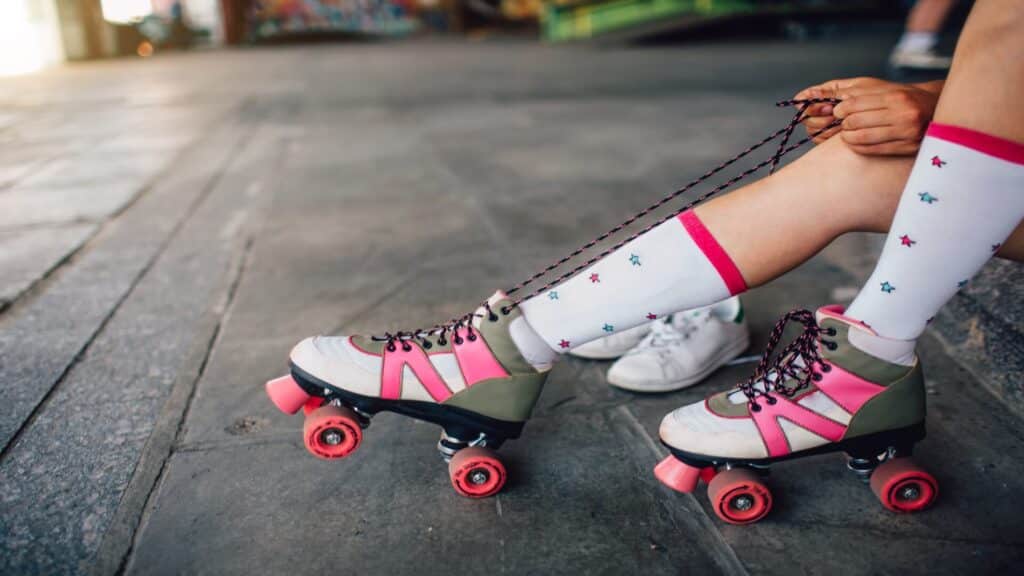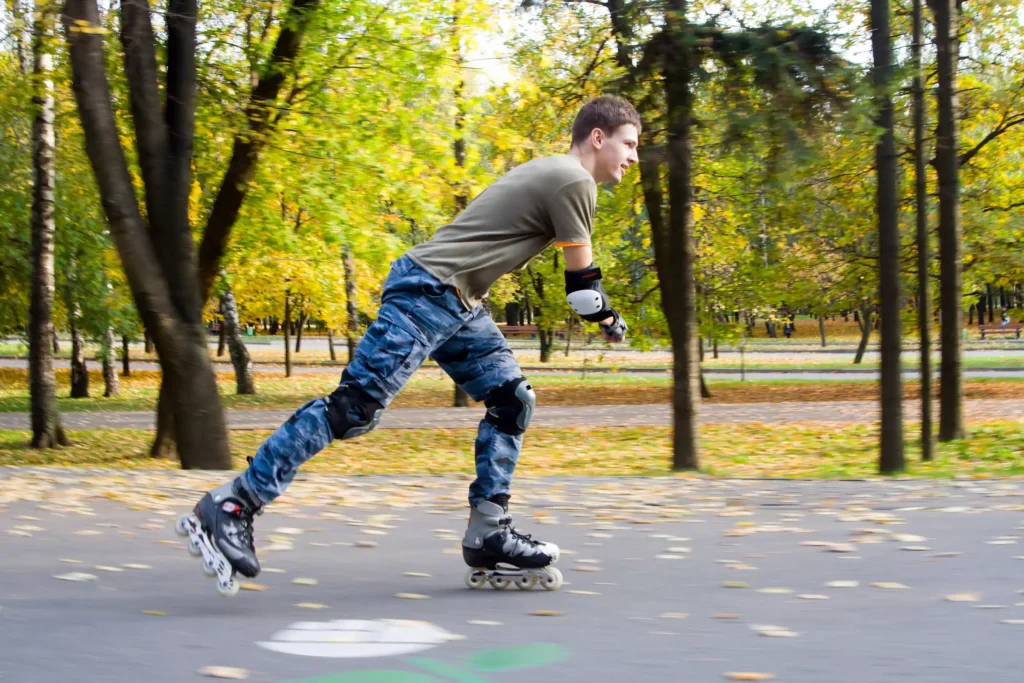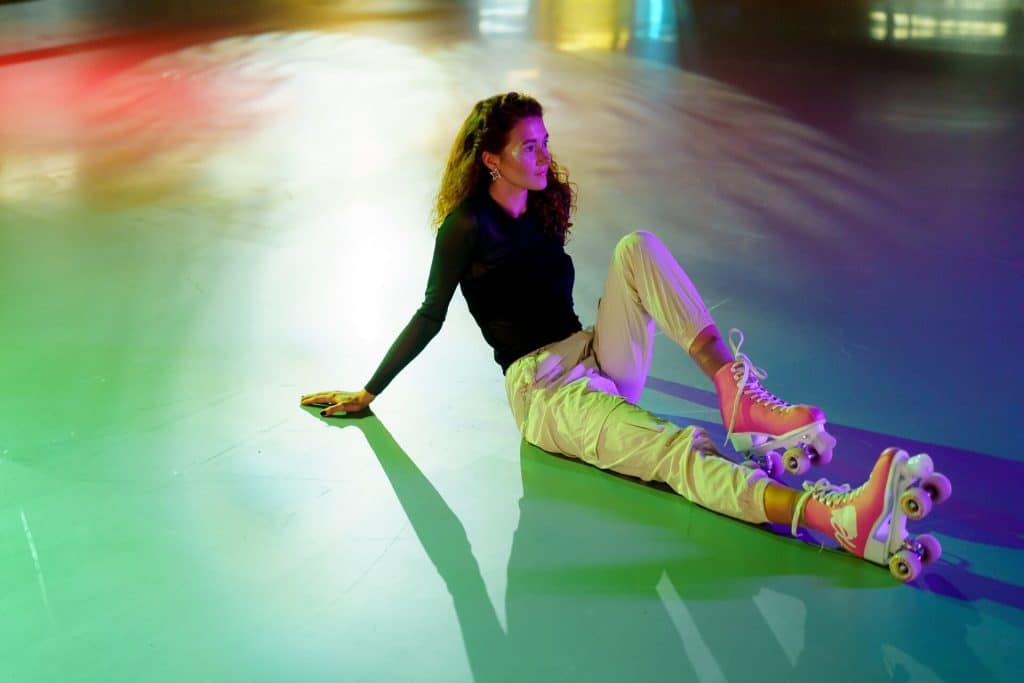The Ultimate Guide to Stopping Safely on Roller Skates
Learning how to stop properly and safely is the most essential skill for any new roller skater. Not being able to halt can result in a loss of control, crashes, and serious injuries. However, perfecting stops can be more complicated than mastering other techniques.
In this guide, we will cover the fundamental stopping methods you should understand and practice when on skates. Proper braking technique allows you to react quickly when moving too fast or needing to take a break. Although many guides focus on tricks, few adequately explain how to brake on roller skates – arguably the most vital ability.
The biggest challenge most newcomers to roller skating face is learning stops. It may seem basic, but seamlessly slowing your momentum takes time to perfect. With some patience and the right tips, you’ll soon be able to control your speed and handle any situation on wheels confidently.
We will break down the essential techniques, common mistakes to avoid, gear to keep you safe, and tips to hone your stopping skills. You’ll have the knowledge to get rolling while keeping risks low. When just starting, go at your own pace and focus on safety. But with practice, braking can become second nature.
Table of Contents
How To Slow Down On Roller Skates Using Different Techniques
Here are four simple moves you can try if you’re new to roller skating or have been skating for a while but haven’t tried any tricks yet. Just make sure to practice in a safe place, away from traffic and other things that could get in the way.
Toe Stop Drag
It is the simplest method for stopping on roller skates is the toe stop drag. Using this technique, you can generate a “drag” that is both light to drag and strong to slow down.
- Bow your front knee so that your leg supports approximately 80% of your weight.
- Let the back skate’s toe stopper scrape against the front skate, which will eventually cause you to slow down.
- Additionally, you should bend your rear knee and point the foot within the sliding skate.
You can watch here how to master the toe stop drag technique on the Fit Thru Play YouTube channel:
Heel Brake Stop
Certain roller skates have at the back heel brakes for steeper downhills and sudden stops.
- Start by bending both knees while keeping both skates.
- With more body weight on a skate, move the other forward while applying the brake on the heel when it barely passes the front tire of the rear skate.
- Let it slide down the ground while remaining in that posture, so the brake is close to the back skate’s front tire.
T-Stop
Learning the t-stop is essential for controlling your speed and stability on roller skates, but it can be tricky to master. Proper form and technique are crucial. The t-stop requires core strength to maintain balance while aggressively twisting one leg sideways to brake. The friction slows you down quickly, so brace yourself.
Gliding
Start by gliding straight on one foot, keeping your free leg tucked close to stay streamlined. Keep your shoulders and hips squared, posture upright but not stiff. Hold for a few seconds to develop strength. If you wobble, keep practicing. Solid balance is step one.
Extending the Free Leg
Next, extend your free leg straight back, maintaining direction and posture. The only change is your leg position. Wobbling means more single-leg gliding practice. Nail the balance before moving on.
Executing the T-Stop
Finally, rotate your back foot outwards, dropping your wheels perpendicular to your direction of travel. Lean into your edges as you carve to a stop. Make contact with all four wheels, emphasizing the outer edges. Maintain posture throughout the stop.
Go slow at first. Practice equally on both sides. Stopping puts force on your knees and hips, so build gradually. Also try the motion standing still, lifting one leg out, and swinging it around with control. Roller skating takes total body awareness and strength. With practice, the t-stop gives you speed control and confidence.
Here you can watch a video about how to master the T-Stop technique from the Dirty School of Skate YouTube channel:
Plough Stops
The Plough Stop is a good way to learn how to stop on roller skates. You can do the Plough Stop in two different ways.
Sliding Plough Stop
For this move, your feet should be wider than your shoulders, your skates should be parallel, your knees should be bent, and your body should be straight. You could keep rolling in this manner until you stop, but it might take time and, more importantly, won’t slow you down if you’re going downhill.
After pressing your heel outwards, you must continue pushing the skates apart. As you thrust out through your heels, the skates tend to roll closer together.
Stepping Plough Stop
It starts with skates parallel to the ground and broader than the shoulders. To use the forces to slow down:
- Every time you switch feet, lift each skate in turn and set it in an inward position (toes in, heel out).
- Since every skate will roll inward toward the center, each step should be taken slightly laterally and sideways to prevent tripping over your toes. Remember that you must stride correctly with the skate facing inwards for this to work.
You can watch here 4 Ways to Plough Stop by This Rad YouTube channel:
Common mistakes when trying to stop on roller skates
Roller skating is a fun and exciting hobby, yet it can be hazardous if the necessary safety precautions and practices are not followed. One of the most frequent errors while attempting to slow down on roller skates is not understanding the appropriate method.
This section will target some of the most common mistakes people make when attempting to stop while roller skating and offer a pinpoint on correcting them.
1. Using the correct stopping technique while roller skating is essential. The T-stop is the most popular and involves crossing one skate in front of the other and using the toe stop to gradually slow down and come to a complete stop. Skaters should be careful not to use their heels to stop, as this can lead to a loss of balance and even a fall.
2. Insufficient braking power is a frequent mistake many skaters make when attempting to stop. If not enough force is used, the skater may keep moving forward even after trying to stop. Therefore, it’s essential to apply the necessary amount of pressure while stopping so that you can completely come to a halt.
3. Awareness is essential when roller skating – not being conscious of the environment can lead to running into objects and trouble stopping. Therefore, it is important to be mindful of your environment at all times and avoid any dangers.
4. Keeping your body weight over your toes is essential when attempting to halt. If the weight is too far back, you may lose balance and fall.
5. Skating success requires practice – the more you do it, the better you get. This is why it’s essential to dedicate time to roller skating practice – so that you can build up your skills and become confident with stopping etc. Additionally, the more practice you put in, the closer you get to achieving perfection.
Avoiding basic mistakes can help you master the art of stopping on roller skates and make your roller skating experience much safer and more fun. Having a good grip on how to decelerate correctly will prevent you from running into obstacles and crashing.
Protective Gear You Should Wear When Learning How To Stop On Roller Skates
To avoid any injuries while learning how to stop on roller skates, it is important to wear the right protective gear. This will make sure you are shielded from any falls and running into obstacles.
Protective gear such as a helmet, wrist guards, elbow pads, and knee pads should be worn to ensure safety.
It is also essential to stop with the correct technique to reduce the chances of sustaining an injury.
If you liked this guide, here are some more guides to improve your skills in order to become an expert skater:
- How To Perform Backward Skating On Roller Skates
- How To Spin On Roller Skates
- How To Roller Skate Without Falling
- How To Feel More Stable On Your Roller Skates
Conclusion
Learning how to stop properly on roller skates should always be the number one priority for any skater. Just as bikes and cars require working brakes, skaters need to know how to control their speed and come to a complete stop. Attempting to skate without this vital skill is asking for trouble.
As covered in this guide, techniques like the toe stop drag, T-stop, and heel brake allow you to gradually slow your momentum or brake suddenly when needed. With practice, stopping can start to feel natural instead of intimidating. Set reasonable goals focused on safety, not just tricks. Work on perfecting your balance and body control at lower speeds before trying to go too fast.
Don’t learn the hard way that improper stopping can lead to ugly spills! Instead, use the tips provided to steer clear of pain and gain confidence on wheels. Learning how to stop on roller skates takes commitment, but the satisfaction of cruising around with precision control makes it all worthwhile.
We hope this guide has reinforced that learning how to stop on roller skates is a crucial skill for both fun and safety. Now that you understand the techniques and common errors, you can start slowly and work towards breaking perfection. Stay safe out there, and happy skating!



